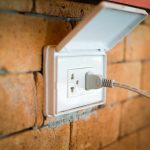Shafts are cylinder-shaped steel rods that transfer torque from motors to other parts of a machine. For the force to be transferred efficiently the shaft must be perfectly aligned with the other nearby shafts. Every equipment maker has specific alignment tolerances to ensure the proper function of their machinery.
Manufacturing and maintenance workers frequently adjust shaft alignment as part of their daily routine. The improper alignment of a shaft puts strain on all the parts of a machine, shortening its life and increasing the need for repairs. Read on for more information on Machine Alignment Dallas.
Shaft Alignment: How it Works
To understand the machine alignment process, one first needs to learn more about the two main alignment types. With angular alignments, repair technicians ensure that shafts have the same angle and slope. With offset alignments, the technician determines whether the shafts share a plan. When shafts are offset misaligned, they share an original slope and are parallel, but do not align at the ends. Some machines can need both kinds of alignment, at the expense of efficiency and performance.
Each type of shaft misalignment can take place in a vertical or horizontal plane. For example, shafts can be parallel to one another, but one can be slightly above the other in an offset vertical misalignment. If the shafts are perfectly parallel to each other and the ground, but are misaligned at the end, they are horizontally misaligned.
Machine Alignment Dallas Problems
Shaft alignment issues do not always bring malfunctions, but they frequently cause vibration, heat and noise, which almost always end in failure. Vibrations can cause connections to come undone, leading to machine inoperability and increased downtime. Conventionally, technicians initiate the vertical alignment process before turning their focus to the horizontal alignment. However, modern methods allow them to align both planes simultaneously.
Dual plane alignment is done by placing sensors at certain places along the machine’s shafts, and using lasers to perfectly align the pieces. Connectors and couplings are loosened before the shafts are repositioned, and the process is repeated until the laser equipment shows that they are aligned within the manufacturer’s specified tolerances.





